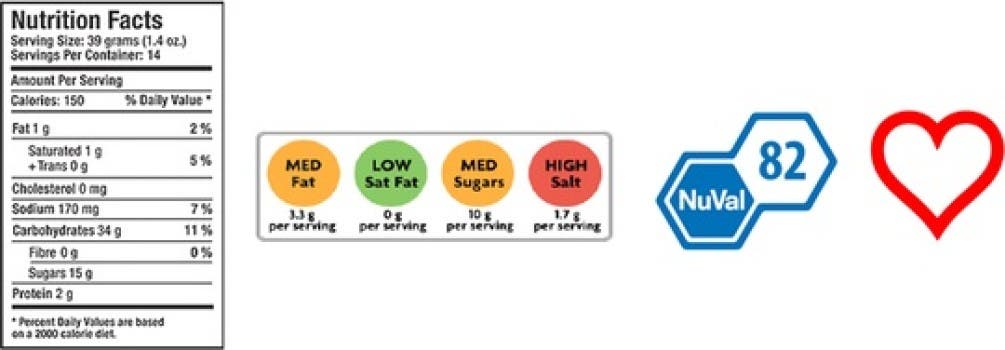Every food product is mandated in most of the world to list its nutritional values – how much proteins, lipids, sugars and so on – yet most people, even nutrition conscious shoppers, have a hard time interpreting the labels to make a healthy decision. In fact, the current leading nutritional facts labeling system in the US and Canada was extremely ineffective, leading to nutritional choice hardly indistinguishable from chance, according to a new report published in the Annals of the New York Academy of Sciences by McGill University researchers. The paper, however, found a system that is actually effective, enabling quick and nutritious choices. The findings could prove to be important for policymakers who might be the lookout for the most effective way to help the population ingest healthier foods and curb obesity, a growing and serious threat to public health in the US, but also elsewhere in the world.
Hard to digest labels

The researchers compared four different labeling systems and found that the Nutrition Facts label currently required on most food products in the US and Canada was the least usable. The system lists several key nutrients and their percentage, which might make a lot of sense if you’re a nutritionist, food scientist or a remarkably well informed citizen. Apparently, shoppers guided by the Nutritional Facts label made choices hardly distinguishable from chance. The Traffic Light system used in the UK allowed for a bit more nutritious choices than chance, but it too didn’t fair very well according to the findings. Traffic light-coded food labels indicating how much fat, salt and sugar an item contains. The colours help shoppers quickly learn at a glance which foods have low, medium or high contents of the aforementioned items. Even though it’s better than the American system, researchers found that it took more time to use, because the colors of several traffic lights have to be counted and compared. Oppositely, labels used in Denmark, Sweden, and Canada allow consumers to make the quickest decision, but did not improve nutritious choices.
“Such certification labels are not sufficiently discriminating to produce consistently better nutrition. They also create controversies about exactly where to draw the line between nutritious and harmful foods,” says co-author Thomas Shultz, Professor of Psychology and Computer Science at McGill.
Combining the best of both worlds, the NuVal label system was found to offer both quick and informed decisions. NuVal is a shelf sticker used in some American food markets, which indicates the overall nutritional value of each food item with a number from 1-100.
“Food shoppers typically have a limited amount of time to make each food choice, and they find the Nutrition Facts labels to be confusing and difficult to use,” says Peter Helfer, lead author and PhD student in Psychology and Neuroscience at McGill. “One product may be low in fat, but high in sugar, while another product may be just the opposite. Nutrition Facts labels can highlight nutrition conflicts but fail to resolve them. Even educated and motivated shoppers have difficulty picking out the most nutritious product with these labels.”






